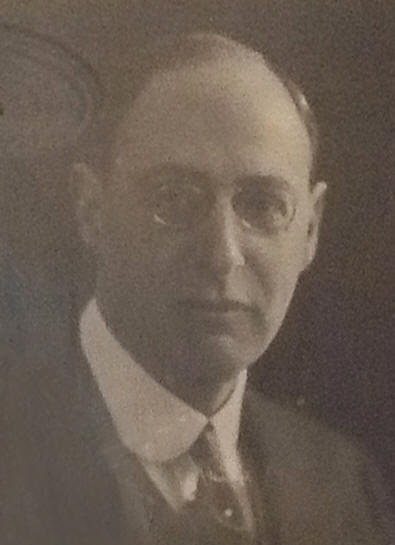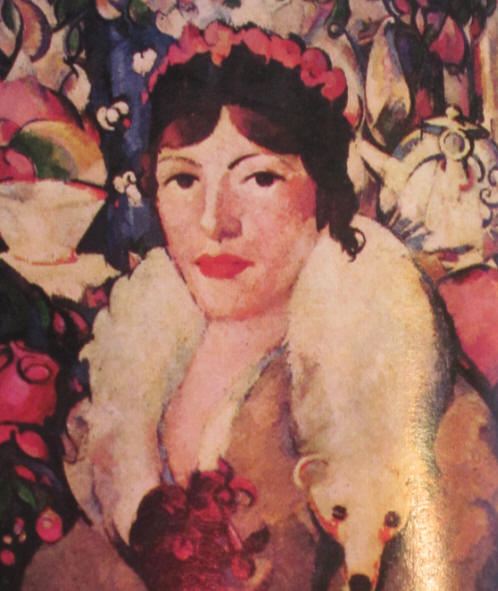|
|
|
|
|
|
|
 |
|
 |
|
|
|
|
|
|
|
|
|
|
Painted
in 1982 by Sir Anthony Baruh Lousada.
Sir Anthony was someone who could combine
happily his career as a successful solicitor
with his passion for the visual arts. It was a
case of following a family tradition - his
father, Julian Lousada, was also a
lawyer and an art collector who bequeathed to his son some fine Impressionist paintings and
drawings, and after the war the son began to collect modern paintings himself. |
|
Sir Anthony Baruh Lousada #210
1907-94
Photograph by permission of his
daughter Sandra.
He was
married twice.
Images of Sir Anthony's parents Julian George Lousada and Maude Reignier Conder, can be found below and also an image of his
grandfather Herbert George Lousada.
|
|
|
|
Peter Lousada was a third
cousin of Sir Anthony and said that his father and Sir Anthony
visited the Jewish Museum together looking for Lousada
material and had some disagreements about family history. Sir Anthony and
Edgar Samuel also
disagreed about the
Lousadas - in that the former was
convinced he was a relative of the Duque de Losada 1706-83. Their debate would be better informed today, for as we
have found there is no connection between the Duque and the Baruch Lousadas who left
Madrid in the 1640s. Sir Anthony was however a keen custodian
of the family's Jewish history, donating three family prayerbooks in Spanish
- one printed by David Tartas is in the Jewish Museum. The
other pair of his prayerbooks is in
Bevis Marks Archives.
He was admitted as a solicitor
in 1933, and was a partner in the family firm of Stephenson Harwood & Tatham
from 1935 to 1973. (A letter from H G
Lousada shows that he and his son Julian were with the firm Tatham & Lousada
in 1914). He specialised in private client work, particularly in the
settlement of artists' estates, acting for John Minton, Ceri Richards, Keith
Vaughan and many others. During the Second World War he worked in the Ministries
of Economic Warfare and Production and in the Cabinet Office. His firm advised Christie's, and he acted for the fine art
trade on many occasions, notably in the Brussels negotiations concerning VAT. He
was a member of the Post Office's Advisory Committee on Stamp Design, and
chaired the Government Arts Collections Advisory Committee from 1976 to 1983. It
was for his services to art that he was knighted in 1975.
In the 1960s Lousada was able to give much of his time to
public service in the arts. Lawyers are often good committee men, and make
excellent chairmen. His firm has long acted for the Royal College of Art, and
Lousada was a council member for a record 27 years, from 1952 to 1979. At the
Tate Gallery, Lousada joined the Board of Trustees in 1952, becoming Chairman
from 1967 to 1969 and Chairman of the Friends from 1971 to 1977. None of the
positions was honorific; most demanded time and tact and energy and hard work,
sometimes bringing with them the bruising experience in public life. Lousada
achieved some notoriety when he announced the Tate's plans in 1969 to build on
to the Millbank facade: it was perhaps an outrageous scheme, best seen as a
desperate measure which achieved the purpose of getting Harold Wilson's
government to make available the adjacent hospital site for the gallery's
expansion.
Anthony Lousada was a skilled chairman and negotiator, whose
talents were sought by many. An eloquent speaker, he was an urbane and charming
man, with many friends and a wide range of interests. A member of the Garrick,
he was a notable amateur sailor. He had an exceptional visual memory, and was
something of a painter himself, particularly after his retirement; he showed his
drawings at the Covent Garden Gallery in 1977 and 1981. It was always the
company of artists that he most loved, particularly valuing his friendships with
the sculptor Barbara Hepworth, and the painters Ben Nicholson, John Piper and
John Hubbard. He was able to help artists with advice; to contribute modestly to
their creative achievements was probably what gave him most satisfaction in a
long and rewarding life.
Much of this material comes from The Independent 29 June 1994,
which amongst many other details in the obituary, indicates that the French
sculptor Louis Francois Roubiliac - who lived most
of his eminent life in England - was a distant ancestor but whether this brought
additional Sephardic genes is not evident.
 |
|
 |
|
 |
|
|
|
|
|
|
|
|
|
Herbert George Lousada #216
1847-1918
corresponded with his Australian cousin
Edward Charles
Lousada
We show
here his ancestry together with that of his
wife Marion Helen Mocatta, and this shows the
Livorno background of many of his ancestors. He
also had Ashkenasi ancestry as his mother was
Juliana Goldsmid. |
|
Julian George Lousada #208
1875-1945
namesake of Julian Land
This image
and the one to the left was
captured on mobile telephone by John Bury
in May 2012 at the Council Chamber of the West
London Synagogue after a meeting of the Jewish
Genealogical Society of Great Britain.
Both his grandmothers were named Juliana - one a
Goldsmid, the other an
Elkin - see
here. |
|
Maude
Reignier Conder #209 b1878
as reproduced by Harper and Queen Sept 1974 from
a painting by J D Fergusson -
the artist was a client of the lawyer Julian
George Lousada. The painting was entitled
'Complexity: Mrs Julian Lousada' and was sold by
Christies on 12 May 2012 for £157,250 |
|
|




